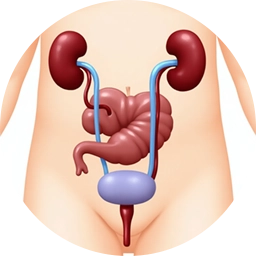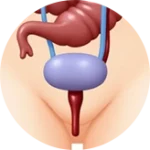Urinary Incontinence
When bladder control is lost – and how it can be restored

What is urinary incontinence
Urinary incontinence is the unintentional loss of urine, a condition that affects a significant number of women of all ages, particularly after childbirth and during menopause. Although it is often a source of embarrassment or a topic avoided in conversation, it is a medically recognized condition that has solutions.
Early diagnosis and the right therapeutic approach can dramatically improve a woman’s quality of life, restoring control, comfort, and confidence.
Types of urinary incontinence

Common causes
Urinary incontinence has a multifactorial etiology and often develops gradually over time. Pelvic floor weakness due to childbirth, age, or hormonal changes during menopause can contribute to incontinence. Reduced estrogen levels can lead to tissue atrophy in the urogenital area. Obesity and chronic constipation increase intra-abdominal pressure, exacerbating symptoms.
Additionally, neurological disorders such as multiple sclerosis, diabetic neuropathy, or spinal cord injuries can impair bladder function.
How diagnosis is made

Treatment options
Treatment for incontinence is individualized based on the type, severity, and specific needs of each woman. Pelvic floor exercises (Kegels) help strengthen the muscles that control the bladder. Physiotherapy and biofeedback are used to improve neuromuscular function. Pharmacological treatment is applied for urge incontinence using antimuscarinics or beta-agonists.
Surgical options, such as the placement of a tension-free vaginal tape (TVT), provide effective results for stress incontinence.

Urinary incontinence is not “just a part of aging” or “something a woman must endure.” It is a medical condition with solutions. The sooner help is sought, the more effectively it can be managed. With the right approach, women can regain control over their bodies and the freedom to enjoy everyday life without restrictions.








